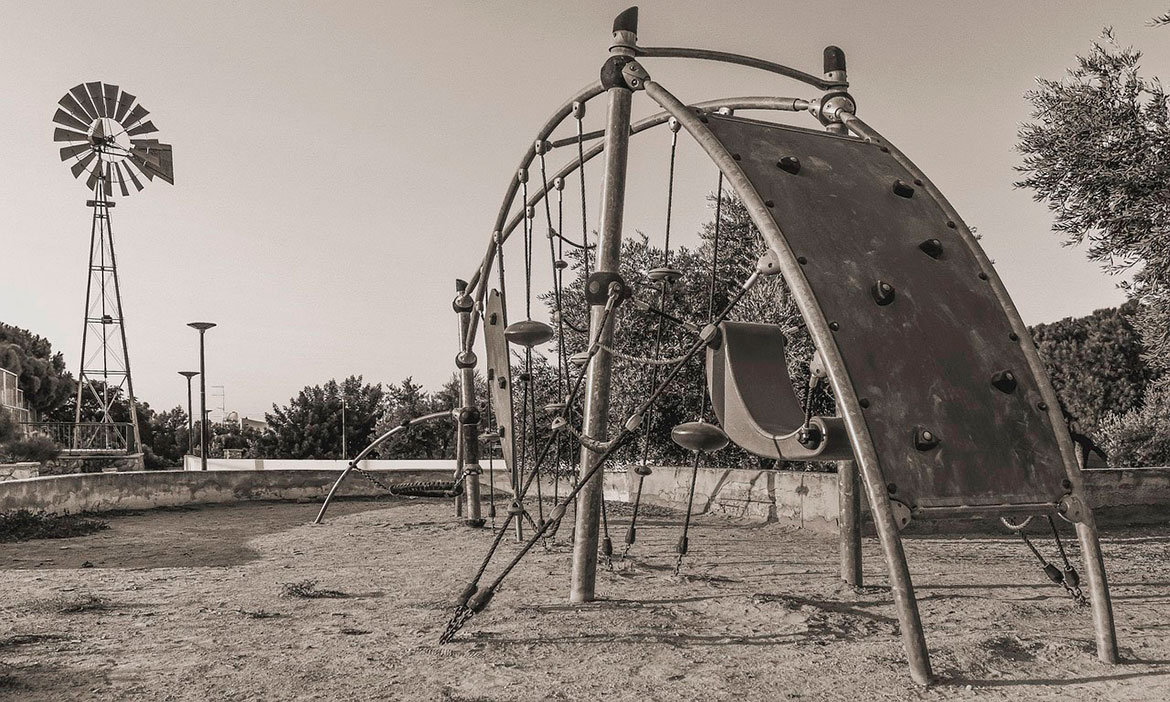The History of Playgrounds and the First Playgrounds
Playgrounds are a perfect place for kids to play, exercise, and interact with other children. Most adults have fond memories of playing on the swings or seesaw or challenging other kids to races across the monkey climbing bars. It's hard to imagine a better play space for children, but surprisingly, the playground is a relatively new creation. The first playground was built in 1859, and over the past century and a half, the playground has undergone a good deal of revision and refinement.
The first playground was built in Manchester, England, but the idea of playgrounds was first developed in Germany. Playgrounds were presented as a way to teach children how to play safely and fairly with one another. The first sketched concept of a playground was produced in 1848 by Henry Barnard and featured a large, shaded area with teachers looking on as children played with wooden blocks, toy carts, and two rotary swings. However, it would be another 39 years before the first playground was built in America, and in the meantime, children needed a safe, designated place to play games. Many children, especially in urban areas, played in the streets or on curbs, and there was constant danger from being hit by passing cars. "Play streets," or streets largely ignored by road traffic, were a popular option for children to seek out.
The first American playground opened in 1887 at Golden Gate Park in San Francisco. It included swings, slides, and even a carousel. Despite its popularity, this early model was regarded as a sort of oddity. The first government-funded playground wasn't installed until 1903, after a few private organizations had made the case for and built playgrounds to provide a safe outlet for children in slums. In 1906, the official Playground Association of America was formed, the purpose of which was to promote the idea of a playground to an American audience. The following year, perhaps due to the attention drawn by the PAA, President Theodore Roosevelt called for the construction of playgrounds as a way to protect children from playing dangerous, unsupervised games in hot city streets.
Of course, after the introduction of playgrounds, a regulatory war began with regard to safety. Climbing structures were banned from New York playgrounds in 1912, as critics believed they were too dangerous for children. Playing on the street was a crime in 1914, as it was believed that playing on the street led to truant behavior. Until government-funded playgrounds gained popularity, play streets became the only safe outlet for children, and cities across the nation began closing streets to allow children to play. The year 1931 saw the rise of adventure playgrounds, a creation of architect C. Th. Sørensen. Adventure playgrounds were playgrounds modeled on the empty lots that children sought out for play. These playgrounds contained tires and other "junk" material, with a few existing play structures, that would allow children to build and create their own unique play area. Well-maintained adventure playgrounds could be unique and enjoyable spaces, but many became a repository for unwanted material. There remains a movement today to reintroduce adventure playgrounds as a viable concept for schoolyard play.
Playgrounds entered mass-production in the 1960s, an example of this being the identical play areas in McDonald's restaurants, and the 1980s saw a barrage of lawsuits against the companies who produced them after children were injured during play. To prevent further issues, industry regulations began popping up to ensure that all playgrounds followed proper safety guidelines. In the later years of the 2000s, cities started experimenting with "pop-up playgrounds," in which the city closes one or more streets to serve as a forum for games and athletic coaching. There are even a few playgrounds that cater to adults ages 70 and older. Regardless of the age demographic served, playgrounds today are a source of fun and community, and only time will tell what innovations help shape the playgrounds of tomorrow.
For more information on playgrounds and how they were developed, please feel free to explore the links listed below:
- Playgrounds: A 150-Year-Old Model
- How We Came to Play: The History of Playgrounds
- Adventure Playgrounds: A Children's World
- Boston Sand Gardens
- About Playgrounds
- Playgrounds and Segregation (PDF)
- History of Playgrounds
- History of Playgrounds in New York City
- Pockets of Disorder: The History of Adventure Play
- Evolution of America's Playgrounds
- Playgrounds in Parks
- A Detailed History of Adventure Play
- The Politics of Playgrounds: A Historical Overview
- Not It!: Street Games, Play Streets, and Playgrounds
- 10 Unusual Playgrounds from Around the World
- Parts of a Playground: Swings, Slides, Carousels, and Climbing Bars
- What's Wrong with America's Playgrounds and How to Fix Them (PDF)
- The First Playground Swings
Find more about the author: Kim Hart


